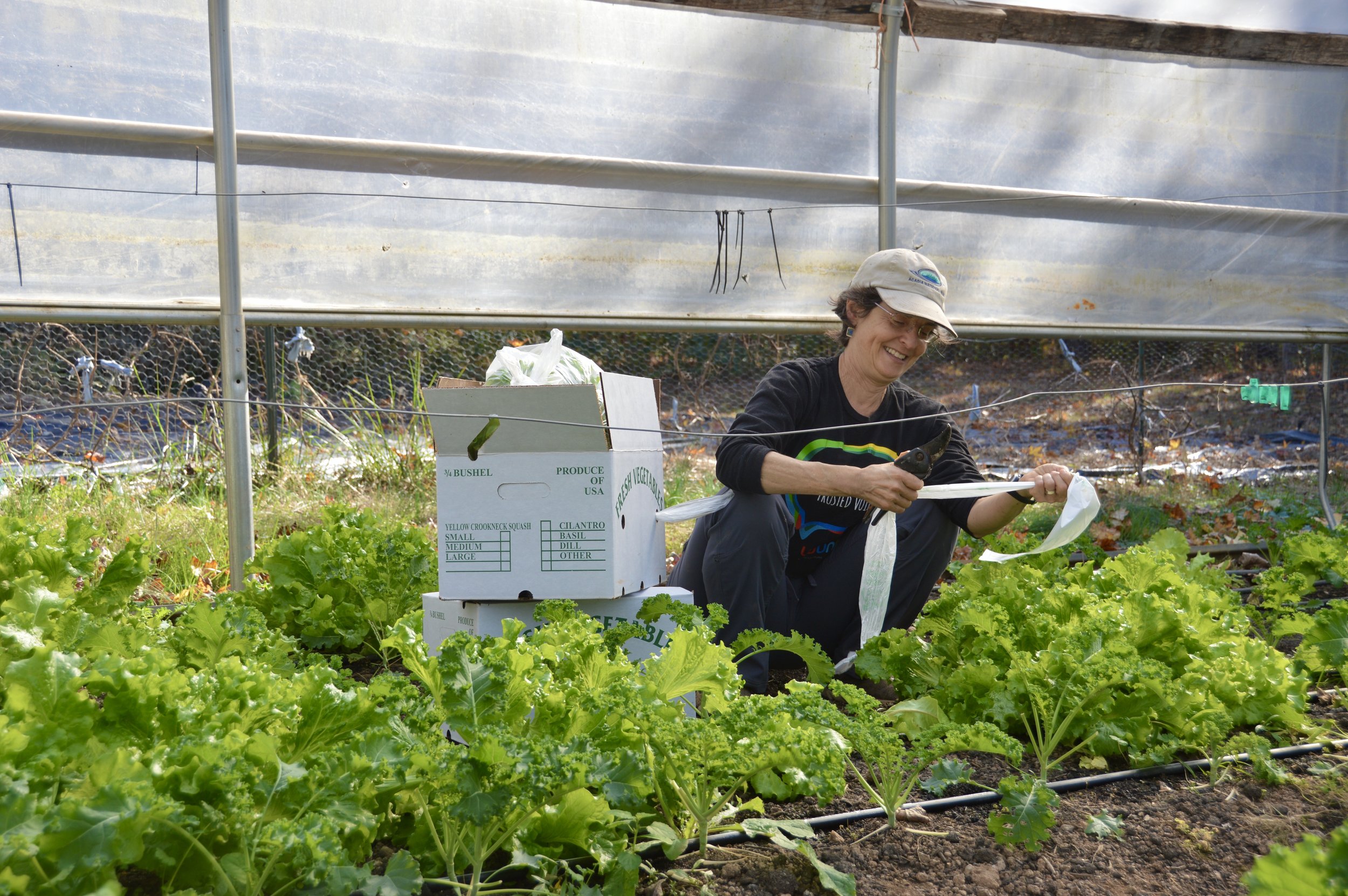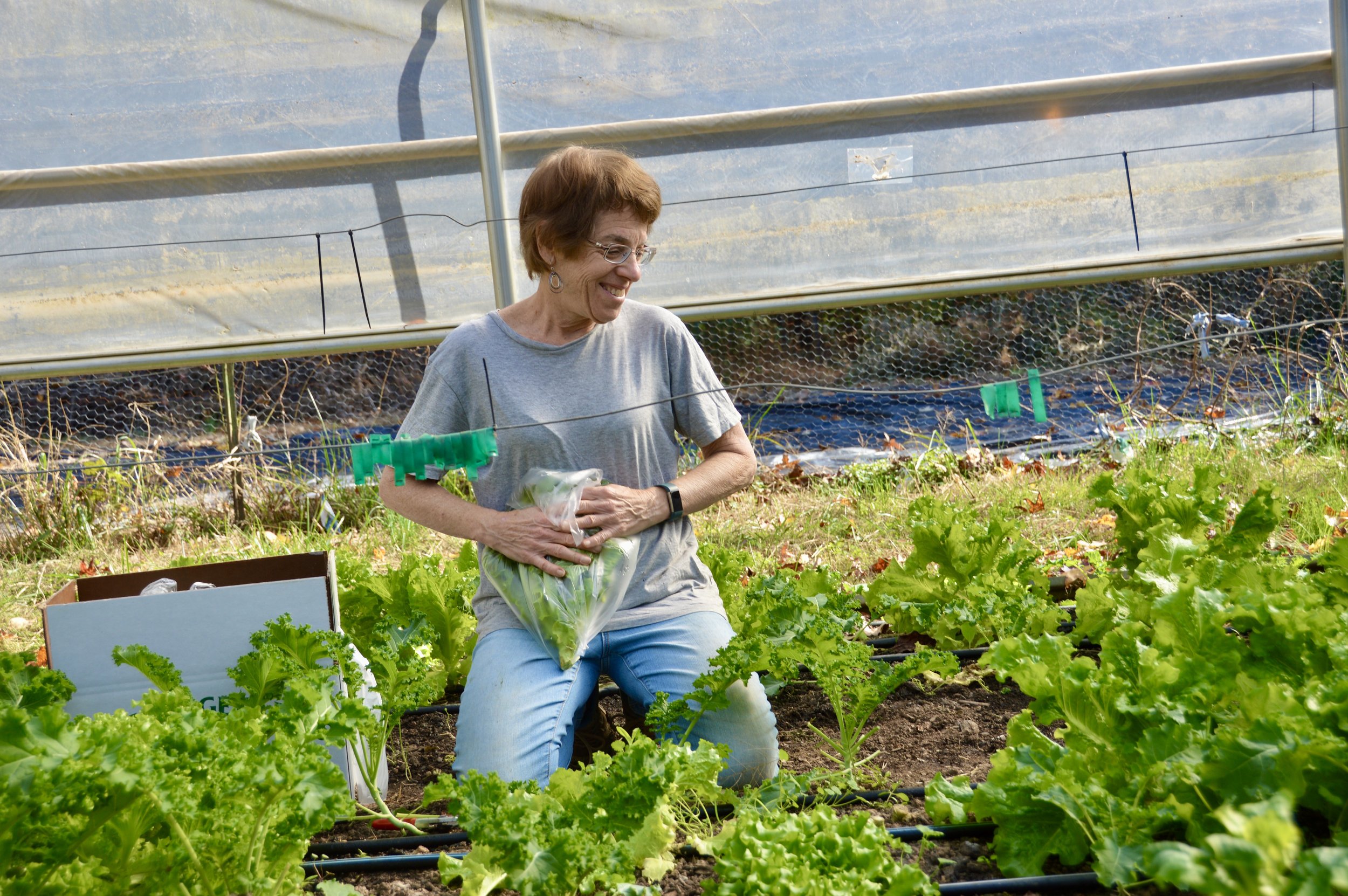
About Wildflower Lane Farm
We’re increasing our yields exponentially and feeding the children in our community.
How we began.
Wildflower Lane Farm began operating in 2010 in Orange County, NC. Owner Jim Sander decided to try his hand at farming after attending an introductory farming course at the Breeze Farm in Hillsborough. After successfully farming there for a year, Jim converted 3/4 acre of pasture land at his 24 acre farm into a small organic farm. QCS certified it organic that year.
For the first 7 years, Jim grew organically-certified produce and sold it to local markets, including Whole Foods, Weaver Street Market, Eastern Carolina Organics, and numerous restaurants and CSA's.
At the end of year 7, Jim decided to take another approach to feeding local people. The existing system made small scale farming frustrating and difficult. One day he had an idea – what if the money factor were removed from the business model? What would farming be like? How would that change things? How would it work?
Jim came up with an idea that would enable him to do what he loved – growing food for people – while removing it from the business cycle that was proving to be unsatisfying. Semi-retired at that point, Jim decided to forego profits and do what he loved – just grow food.
We join forces with TABLE.
Jim’s spark of inspiration led him to stop in at the local non-profit group TABLE one day while he was walking around Carrboro. TABLE has been operating for 12 years; their mission is to feed local kids who are food insecure. Approximately 30% of children in Orange County, NC are food insecure, and TABLE provides food relief to those families with weekly food boxes delivered to them either at school or to their house.
The plan Jim presented was simple: TABLE would provide funding for needed materials such as seeds, seedlings, compost, irrigation lines, fertilizer etc. They would also provide free volunteer labor. Jim agreed to work 20 hours each week for free, supervising volunteers provided by TABLE.
To his surprise, TABLE visited the farm and agreed to try the plan for a year.
Produce yields skyrocket, we feed more kids.
Table supplied about $4,500 for materials in 2019. Jim worked 20 hours each week, and 6-8 volunteers worked about 30-40 hours/week. At the end of the year, food valued at approximately $45,000 was delivered to TABLE for distribution. Other food relief groups and recovery centers were also supplied with food when TABLE was closed for a few weeks.
Based on this initial success, Jim and TABLE continued their program. In 2020, TABLE supplied about $8,000 for materials, and received $58,000 in produce.
In 2021 they continued the program, by supplying $15,000 ($9,000 in materials and $6,000 for one part-time worker), with a return of $80,000 in organic produce. This is on 3/4 acre! In fact, Wildflower Lane Farm produced over 25,000 pounds of produce over 9 months in 2021.
Other activities at the farm developed over the first three years, including dinners, summer camp programs, and family day programs, all designed to introduce people to local, small scale agriculture.
Volunteers are key.
Numerous volunteers have passed through Wildflower Lane Farm over the years. Most volunteers arrive and work a 3-4 hour shift once a week, although some work quite a bit more. Over the years, a regular team of volunteers has come together and continues to work together today. Meet them here.
What makes us successful.
The two things that make Wildflower Lane Farm unique are the "low-till/regenerative" approach we use and the non-profit/volunteer aspect of the operation.
Our approach incorporates intensive planting, which helps create large quantities of food in a small space. Jim estimates that the farm will be supplying $100,000 of produce in 2022, and $125,00 in 2023, all on 3/4 acre. This is in line with the most successful small farms in the country.
The non-profit/volunteer aspect brings much-needed produce to people who appreciate it at extremely affordable rates. This eliminates corporate profit, farm profit, and labor costs. Produce grown at Wildflower Lane is supplied at approximately 15% of normal retail costs. In other words, $100 worth of retail produce is grown and delivered to Table for about $15.
Our Farming Model.
Wildflower Lane Farm uses low-till regenerative practices. These include:
1 - Keeping the soil covered, with either crops, cover crops or mulch.
2 - Minimizing soil disturbance. Soil preparation is done through manual labor with the broad fork and a small tiller that is powered by a battery powered electric drill. Only the top 1 to 2 inches of topsoil are tilled
3 - Maximizing crop and cover crop diversity
4 - Regular use of compost to improve soil structure
5 - No chemical fertilizers, herbicides or pesticides.
6 - Pollinator gardens increase bee pollination, and bird houses encourage a bird population that limits insects.
7 - Organic animal fertilizers are used.
8 - Organic principles: Wildflower LF has been organic certified since our inception 10 years ago.
We are a 3 season farm, starting with cool weather crops in March, segueing into warm weather crops starting in May, and ending with cool weather crops again in Sepember, through the end of November.
Before crops are planted in early spring, silage tarps are laid down to kill weeds and prepare the beds for planting. Beds are then cleaned up and composted and seedlings are planted. Drip irrigation is used extensively.
Our next step.
Our next step is to help other farms create a similar type of experience on their land. Wildflower Lane hopes to be a model for this and will help other farms consider and plan a similar program for their farm. Click here to reach out.






